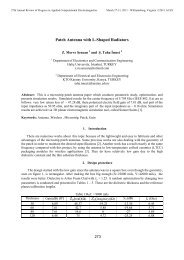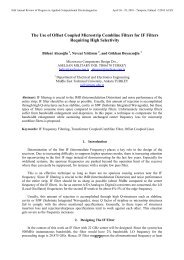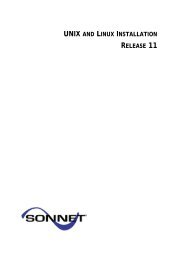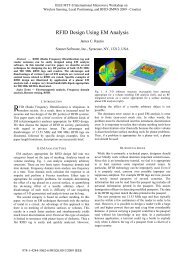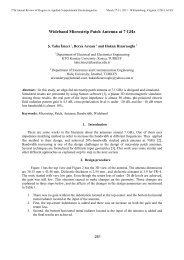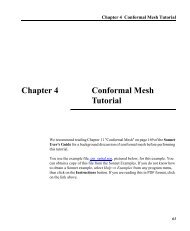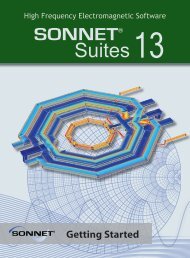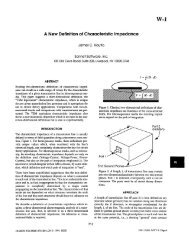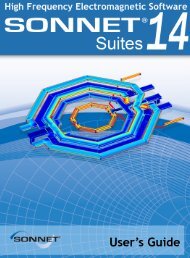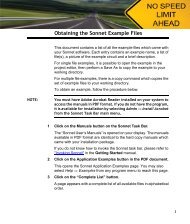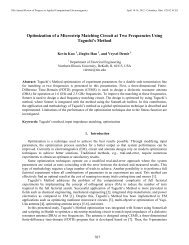RFIC Layout Analysis Using Sonnet EM with ... - Sonnet Software
RFIC Layout Analysis Using Sonnet EM with ... - Sonnet Software
RFIC Layout Analysis Using Sonnet EM with ... - Sonnet Software
- No tags were found...
You also want an ePaper? Increase the reach of your titles
YUMPU automatically turns print PDFs into web optimized ePapers that Google loves.
View Current DensityIt is also interesting to observe the currentdensity as a function of frequency.Calculating the current density addsminimal <strong>EM</strong> simulation overhead, but it isvery useful to gain insight into how acircuit works and what cell size isappropriate.Current density at 0.1GHz is shown in thefigure to the right. Since skin effect at thislow frequency is much thicker than themetal, current is relatively evenlydistributed across the width of thetransmission lines, and the conductivelosses dominate the current spreadingeffects.Current density at 15GHz is shown in thesecond picture. In this case, skin effectlosses will dominate the spiral Q, as theskin effect is much thinner than the metal.In addition, current crowding is observedbelow (where current tends to have amaximum on the edges of thetransmission lines). Current crowdingoccurs at higher frequencies where theself-reactance of the transmission lines iscomparable to or greater than theconductive loss. Note the high edgecurrent that <strong>Sonnet</strong> conformal meshingshows very accurately. This edge currentmust be modeled very accurately by any<strong>EM</strong> analysis tool in order to correctlyassess the losses in the device thatcontribute to the Q.Back annotating results to ADSYou can easily back annotate <strong>EM</strong> simulation results to ADS, to use it in a model based simulation. In the <strong>Sonnet</strong> plotting tool emGraph,select the data set which you want to export, then use Output > S/Y/Z Parameter File from the menu. This brings up a dialogwhere you can save model data in Touchstone (S2P), MDIF and other file formats. That data can be used easily in ADS as black boxdata, just like measurement results.The Ebridge plug-in also offers a menu item Import MDIF to assist you in reading MDIF swept parameter results created by a sweptparameter<strong>EM</strong> analysis in <strong>Sonnet</strong> into an ADS schematic.11



